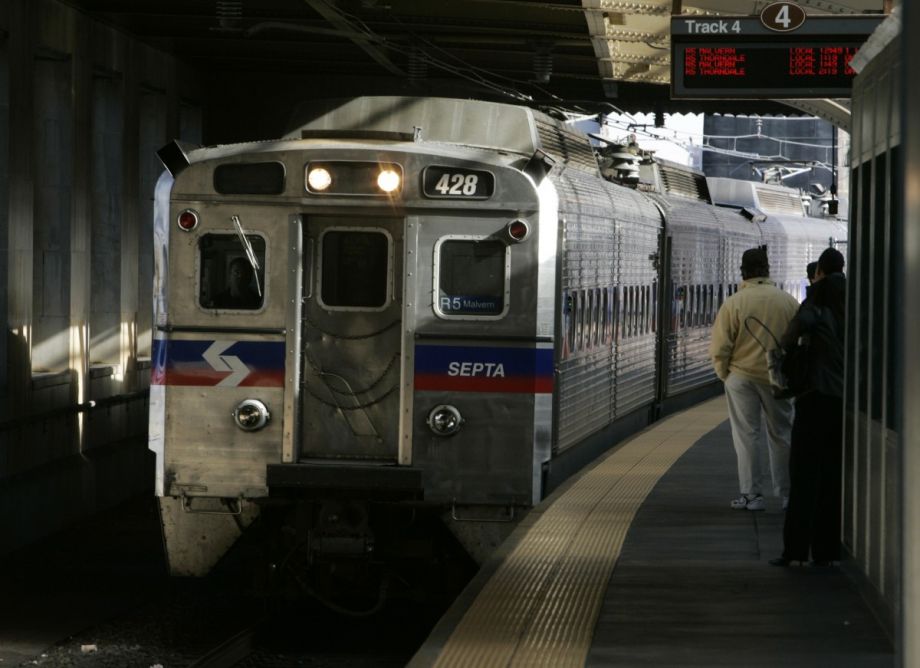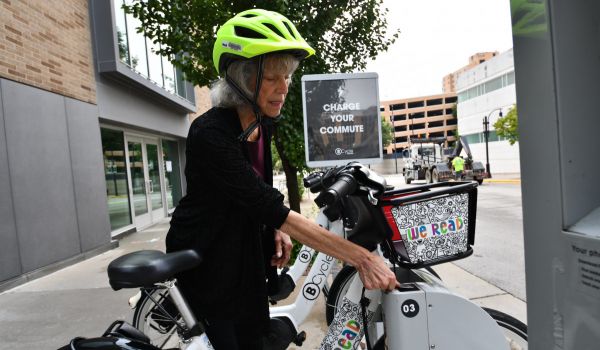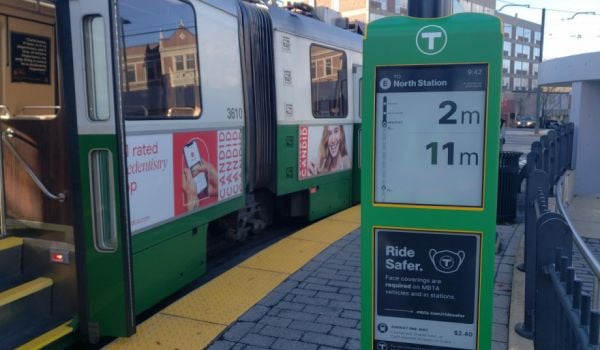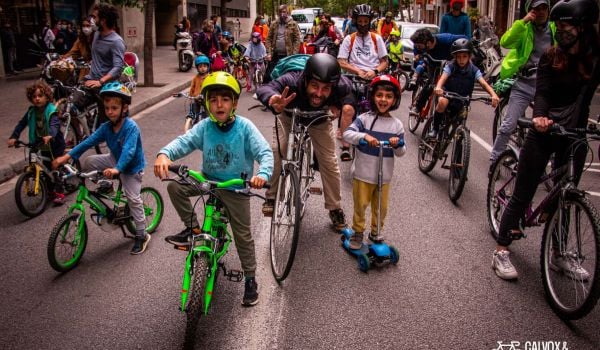With bicycling rates in Philadelphia more than doubling in the last 20 years and public transportation ridership at a 25-year high, the Southeastern Pennsylvania Transportation Authority (SEPTA) is looking for ways to bring these two modes of transit together.
The agency’s first Cycle-Transit Plan, released this year, explores policy and infrastructure changes that could make it easier for riders to combine bicycling and public transportation in one commute. It’s one of just a few formal cycle-transit integration plans in the country.
“Our ridership is growing and our parking lots are not getting any bigger,” says Becky Collins, SEPTA’s strategy and sustainability planner. To come up with the plan, her sustainability working group used data to evaluate how SEPTA has performed in three facets of cycle-transit integration — biking to transit, bikes on transit and bikes at transit — and how the agency can improve.
Collins and other SEPTA officials conducted site visits to transit stations, culled customer feedback and looked at RideScore, an online tool launched in June 2014 by the Delaware Valley Regional Planning Commission (DVRPC). RideScore evaluates transit stations by condensing a variety of factors — including transit volumes and proximity to retail centers, bicycle facilities and outdoor destinations — into a numeric score that indicates which stations could benefit from improved bike infrastructure.
“There’s two schools of thought: If you build it will they come? Or should you peg the infrastructure to places that are already utilized?” says Collins. “We wanted to peg it to places that didn’t have a lot of bikes because maybe people weren’t doing it because it was too difficult.”
Today, cycle-transit integration in Philadelphia is promising but patchy: All regional rail stations have a limited amount of bike parking, but suburban stations often are difficult to reach without a car. A limited number of bicycles are permitted on subways and regional rail during off-peak hours only. Bike racks on buses and trackless trolleys can carry two bikes at a time. Trolleys can’t accommodate bicycles at all. (Folding bicycles are an exception; they are permitted on any type of transit at any time.)
The first infrastructure change to follow the plan will be improved bicycle parking at select regional rail stations. SEPTA’s $1.3 billion 2016 budget includes $3 million to install new protected bike shelters at 15 stations every year for the next three years. The first 15, which Collins hopes will be completed in Spring 2016, will appear at some of the system’s biggest hubs (such as Suburban Station in Center City and University City, near Penn and Drexel universities) as well as small-town stations in the suburbs that have high RideScores and high demand.
Other projects to encourage multimodal transit are already underway. In January, SEPTA removed four bench seats from six cars on the Market-Frankford subway line to assess the impact on bicycles (as well as luggage and strollers) and congestion.
The Manayunk Bridge, a former rail right-of-way converted into a bicycle and pedestrian trail to link two major existing trails, has a projected September opening.
SEPTA has also set up mobile demonstrations of bus-mounted bike racks so cyclists can try before they ride. Permanent demonstration racks will be installed in front of SEPTA’s city headquarters.
Commuters can access information and directions for multimodal travel through GoPhillyGo, a new wayfinding website developed by the Clean Air Council in partnership with SEPTA and launched this June. Users choose to bike or walk to transit — plus whether they want a ride that is “faster,” “flatter,” or “safer” — and get directions. The site also provides a handy guide to rules for bikes on SEPTA transit.
Other Cycle-Transit Plan proposals include converting more rail right-of-ways into trails; integrating payment with Indego, Philadelphia’s bike-share program designing a branded SEPTA folding bike (as New York’s MTA has done); and easing peak hour bike restrictions on the subway and regional rail, following the example of the MTA and San Francisco’s BART.
“Most transit agencies do not have such a plan, so this is kind of revolutionary [for] a big transit agency to come up with a plan to accommodate bicycles on transit in a methodical, data-driven way,” says John Boyle, research director at the Greater Philadelphia Bicycle Coalition.
He is pleased SEPTA is prioritizing bike parking at stations, calling it “the biggest lack,” followed closely by lack of storage accommodation on train cars.
That’s one area in which SEPTA is stymied. Already running at full capacity, regional rail can’t accommodate more bikes; trolley design resists reconfiguration. But Collins says SEPTA will prioritize integrated bike solutions when purchasing new vehicles.
SEPTA’s ability to improve cycling routes to stations is also limited. “SEPTA can only do so much because we don’t control the area around the station,” says Collins. Expansion of bike trails will require buy-in from towns, municipalities and private property owners.
The plan “is a living document,” Collins says, and she hopes it will continue to transform. “People who are using the system every day have a lot of valuable feedback for us.”
The Works is made possible with the support of the Surdna Foundation.
Jen Kinney is a freelance writer and documentary photographer. Her work has also appeared in Philadelphia Magazine, High Country News online, and the Anchorage Press. She is currently a student of radio production at the Salt Institute of Documentary Studies. See her work at jakinney.com.
Follow Jen .(JavaScript must be enabled to view this email address)

















